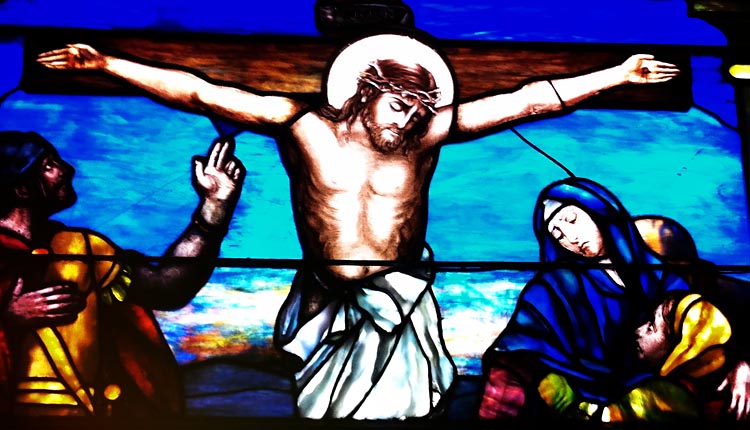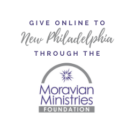Faces Around the Cross: 7 of 9
The Mother of Jesus
by:Worth Green, Th.M., D.Min.
We are talking about “Faces Around the Cross.” We have talked about the Clergy and the Soldiers. We have talked about Good Guys, and Bad. We have talked about Mary Magdalene, “the Apostle to the Apostles,” and about “the Beloved Disciple.” Today, we are going to talk about “his mother.” Our text declares:
26 When Jesus saw his mother, and the disciple whom he loved standing near, he said to his mother, “Woman, behold, your son!” 27 Then he said to the disciple, “Behold, your mother!” And from that hour the disciple took her to his own home.
John 19:26-27
It has been rightly said that behind every great man there is a great woman, and most often her name is “Mother.” That is true here, too; but Jesus was more than a man. The four gospels use the phrase “his mother” nineteen times to describe the Mother of Jesus. This usage indicates what we already know: The Mother of Jesus drew her identity primarily from her son.
The author of the 4th gospel never calls the Mother of Jesus by name, yet she had a name. In English we call her, “Mary,” or sometimes, on Christmas Eve, when I get a bad start, “Maaary.” Maaary Hege gives me grief over that. The English name “Mary” is derived from the Greek, “Maria,” which is a shortened form of the Hebrew Mariam, though both forms appear in the gospels.
Unlike the 4th Gospel, all three of the synoptic gospels call Mary by name.
Luke calls Mary by name 12 times in his gospel and once in the Book of Acts.
Matthew calls Mary by name 5 times—though only once outside of the infancy narratives.
Mark names Mary only once, but he refers to her once more.
Mary is not mentioned by name anywhere else in the New Testament. Though some would argue that she is the heavenly woman of Revelation 12 that is clothed with the sun, with the moon under her feet, and a crown of twelve stars on her head. Catholics believe that she is part of the fusion imagery/polyvalent symbolism that is found in the book of Revelation, and points not just to Mary, but also to Israel, the Church, and Eve, the mother of all living.
What do we know about Mary? Luke tells us that she was living in Nazareth, of Galilee, and engaged of Joseph when the Angel Gabriel appeared to her saying:
“Do not be afraid, Mary, for you have found favor with God. And behold, you will conceive in your womb and bear a son, and you shall call his name Jesus. He will be great, and will be called the Son of the Most High; and the Lord God will give to him the throne of his father David, and he will reign over the house of Jacob for ever; and of his kingdom there will be no end.”
And Mary said to the angel, “How shall this be, since I have no husband?”
And the angel said to her, “The Holy Spirit will come upon you, and the power of the Most High will overshadow you; therefore the child to be born will be called holy, the Son of God.”
So, here we have two very ordinary facts: 1) Mary was living in Nazareth of Galilee, and 2) she was engaged to Joseph. We also have several extraordinary facts: 1) The appearance of the angel is an extraordinary fact. In Matthew’s account of the angel’s appearance to Joseph, the angel appears in a dream. Perhaps it was so with Mary? We don’t know, and it may be that she did not know. In 2nd Corinthians 12:2 St. Paul mentions a man in Christ—a reference to himself, who was caught up into the third heaven. He says that “whether in the body or out of the body I do not know, God knows.” And so it maybe here. 2) Mary is told she is going to be the mother of a son who will be called “the Son of the Most High,” and he will the Jewish Messiah, and he will reign forever. The long awaited Messiah is about to arrive! 3) Mary is told that she will still be a Virgin when she gives birth. If Jesus is “the Son of the Most High,” as we believe he is, then it might also be said that it would be extraordinary if One as unique as Jesus did not have a unique birth.
Matthew agrees with Luke that Mary was still a virgin when Jesus was born. In Matthew 1:25 we read that Joseph “knew her not until she had borne a son; and he called his name Jesus.” The Big debate is whether Joseph ever knew Mary at all. Catholics point out that since the time of Irenaeus (c. 130 to c. 202), there has been a tradition of the Perpetual Virginity of Mary. They say that Mary was a Virgin before, during, and after the Birth of Jesus. There is one hiccup. In Mark 6 we read of the four named brothers of Jesus, 1) James, 2) Joseph, 3) Simon, and 4) Judas, and of the unnamed and unnumbered “sisters” of Jesus. Catholics are quick to point out that since the time of Origen (c. 185 to c. 254) it has been taught these siblings were children of Joseph from a previous marriage, or, perhaps, cousins. We know from John 19 that Mary had at least one sister. Protestants, on the other hand, prefer the simpler explanation that following the Birth of Jesus, Joseph “knew” Mary, and fathered other children by her. This is an acceptable reading of Matthew 1:25, too.
It is interesting that the Beloved Disciple is the authority behind the 4th Gospel and he is never named therein. Likewise, he took the Mother of Jesus into his own home, and she is never called by named. Why not? It may be that go unnamed, because the community in which the 4th Gospel was written knew both, by name, and by sight. I think the fact that they are unnamed assumes that the author of the 4th Gospel knew at least some of the Synoptic tradition—even if he never had the privilege of reading any of the 3 gospels in finished form.
It is also interesting that the 4th Gospel is silent regarding the Virgin Birth. Some have suggested that the Mother of Jesus never spoke of it, and the author of the 4th gospel did not know the traditional birth narratives of Luke and Matthew. However, it may be that the author of the 4th Gospel is less interested in how Jesus was born as in the fact that he was born at all. For the author of the 4th Gospel the Divinity of the Son of God did not begin with his Virgin Birth. It begins in the depths of God, for the Son of God is the pre-existent and eternal Word about whom he could say: “In the beginning was the Word, and the Word was with God, and the Word was God.” Whatever the case, we know that, eventually, the early church accepted the doctrine of the Incarnation and incorporated into it the idea of the Virgin Birth. Again—it is fitting that someone as unique as Jesus should have had a unique birth.
The last mention of Mary is in Acts 1. After the disciples witness the ascension of Jesus, they return to the upper room, and Mary is with them, and the brothers of Jesus. Then Mary, the Mother of Jesus disappears from the pages of the New Testament. One tradition says that she lived and died with John the son of Zebedee in Ephesus. Another tradition declares that she died in Jerusalem. Several traditions point out that she died a very peaceful death, just like falling asleep, and that that following her death, her body was laid in a tomb. However, when people went looking for her body they could not find it. So it was assumed that her body was taken into heaven by God. Catholics call this “the Bodily Assumption” of Mary. This doctrine was made the official teaching of the Catholic Church by Pope Pius XII on November 1st, 1950.
Some people are interested in Mary’s age at her death. Various traditions indicate says that Mary was 12 to 14 when she became pregnant with Jesus. Another tradition says that Mary lived 11 years after the death and Resurrection of Jesus. If Jesus was crucified, buried and raised, sometime between 30 and 33 years of age, that would mean that Mary died, somewhere between 53 and 58 years of age. Of course, yet other traditions attributed Mary with an extraordinarily long life.
I am quite sure that there was a time in Mary’s life when she thought she had lived too long. She stood at the foot of the cross and watched the life of her son ebb from his body, which had been broken by the cruelty of men. She had not even the solace of knowing that he died by accident or by some terrible capricious disease. What killed her son was the willful and malicious evil that was in the hearts of humankind, Jew and Gentile.
Most of us do not want to even imagination a situation in which we outlive a child, or a grandchild; but many people do. And most mothers (and fathers, too) have known the emotional roller coaster of watching with a child through a serious illness or some other crisis. And many of those who have done so have found a special solace in the idea that this woman, Mary the Mother of Jesus, lived through a similar tragedy, and it was not because God had judged her unworthy, but just the opposite. She was the most worthy of women! As the angel said, “Do not be afraid, Mary, for you have found favor with God.” Yet even that favor did not protect her from the prophetic pronouncement of Simeon:
“Behold, this child is set for the fall and rising of many in Israel, and for a sign that is spoken against 35 (and a sword will pierce through your own soul also), that thoughts out of many hearts may be revealed.” (Luke 2:35)
What about praying to Mary? Catholics are quick to point out that they do not worship the Virgin Mary they venerate her. Officially, Catholics are permitted and encouraged pray to Mary, and to the other saints. The saints have influence with God, they say. Officially, Protestants are discourage from doing offering prayers to Mary and the saints. In Matthew 6:9 Jesus taught his disciples the way to pray, giving them an example we know as “the Lord’s Prayer,” and in this example the prayer was addressed to God as “Our Father.” Though I believe that prayer should always be directed to God—as Jesus taught his disciples, the truth is that God has a better messaging system than we do. We use our phone to send a text message to a particular number, and if it is a wrong number, we do not know where that text goes as it bounces around the internet, sometimes and sometimes not returning to us marked as “undeliverable.” With God it is better. When we send a prayer with the ultimate destination of God, God hears that prayer, for as Jesus himself said, “Your Father knows what you need before you ask him.” (Matthew 6:8)
Some people don’t pray to Mary, they pray to God, but they sometimes talk to Mary like they would a trusted friend, or a beloved grandmother. It is a natural response. When tragedy strikes, we are frequently seek out a support group made up of those who have suffered a similar injury. Mary is the preeminent member of one of the largest support groups in the history of our world—she belongs to the class of those mothers and fathers who have suffered with their children.
Yet that is not the end of Mary’s story. There is no record in the New Testament that the Risen Jesus appeared to Mary as he did to his brother James (1st Corinthians 15:7) or his other brothers (1st Corinthians 9:5) Yet, in the 4th Gospel Mary is taken into the home of the Beloved disciple. You will recall that, on the First Easter Sunday, it was the Beloved Disciple who ran with Peter to the Empty Tomb. The text says that when the two had seen what they had seen they returned to their own homes. Surely, upon arriving at his home, the Beloved Disciple must have told Mary about the empty tomb, and he must have mentioned the peculiar arrangement of the grave clothes in the empty tomb. This must have put hope in this mother’s heart. And, later when the Beloved Disciple knew beyond a shadow of a doubt that Jesus was alive again, he surely told her about the three occasions recorded in the 4th Gospel when Jesus appeared not just to the Beloved Disciple, or to one or another of the other disciples, but to half a dozen or more of the disciples at once.
“This is not wishful thinking on my part,” he would have said, “We all saw him. We all heard him.” You Son is alive, and he is looking better than every before. It is the message of Easter, directed not just into the world, but into a particular heart, the heart of “his Mother.” And all Mothers, and all Mothers’ children—and that includes all of us, have been blessed by it.
Finis
Notes:
There was no full consensus on the doctrine of perpetual virginity within the early Church by the end of the second century, e.g. Tertullian (c.160 – c.225) did not teach the doctrine (although he taught the Virgin birth), but Irenaeus (c.130 – c.202) taught the perpetual virginity, along with other Marian themes.
The Bodily Assumption of Mary: The Roman Catholic Church teaches as dogma that the Virgin Mary “having completed the course of her earthly life, was assumed body and soul into heavenly glory.” This doctrine was dogmatically and infallibly defined by Pope Pius XII on November 1, 1950, in his Apostolic Constitution Munificentissimus Deus. In the Eastern and Oriental Orthodox Churches, this belief is also known as the Dormition of the Theotokos or “the Falling Asleep of the Mother of God.” The Feast of the Assumption is a major feast day is the churches that observe it. It is ordinarily celebrated on August 15, and is many Catholic countries it is a Catholic Holy Day of Obligation. That is, it is mandatory.







